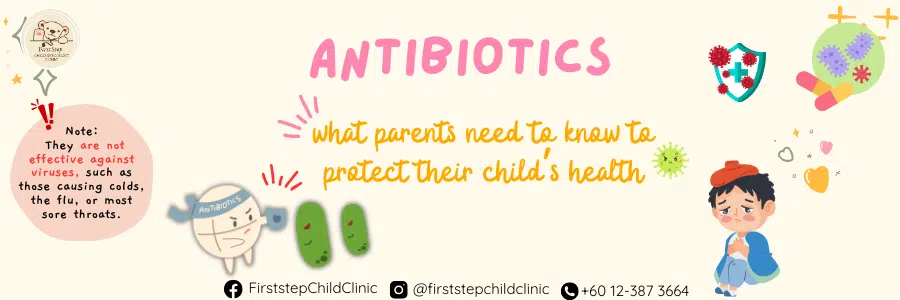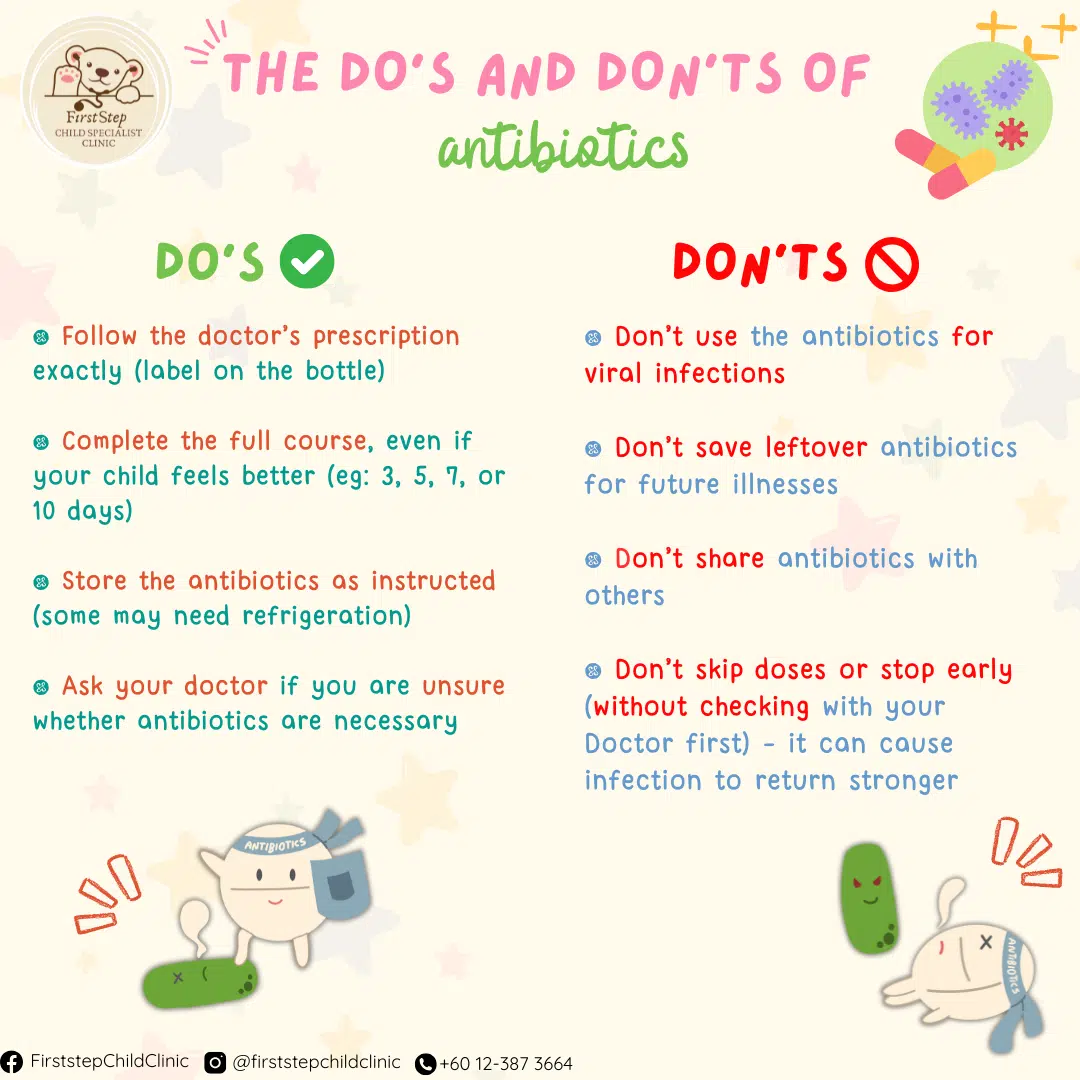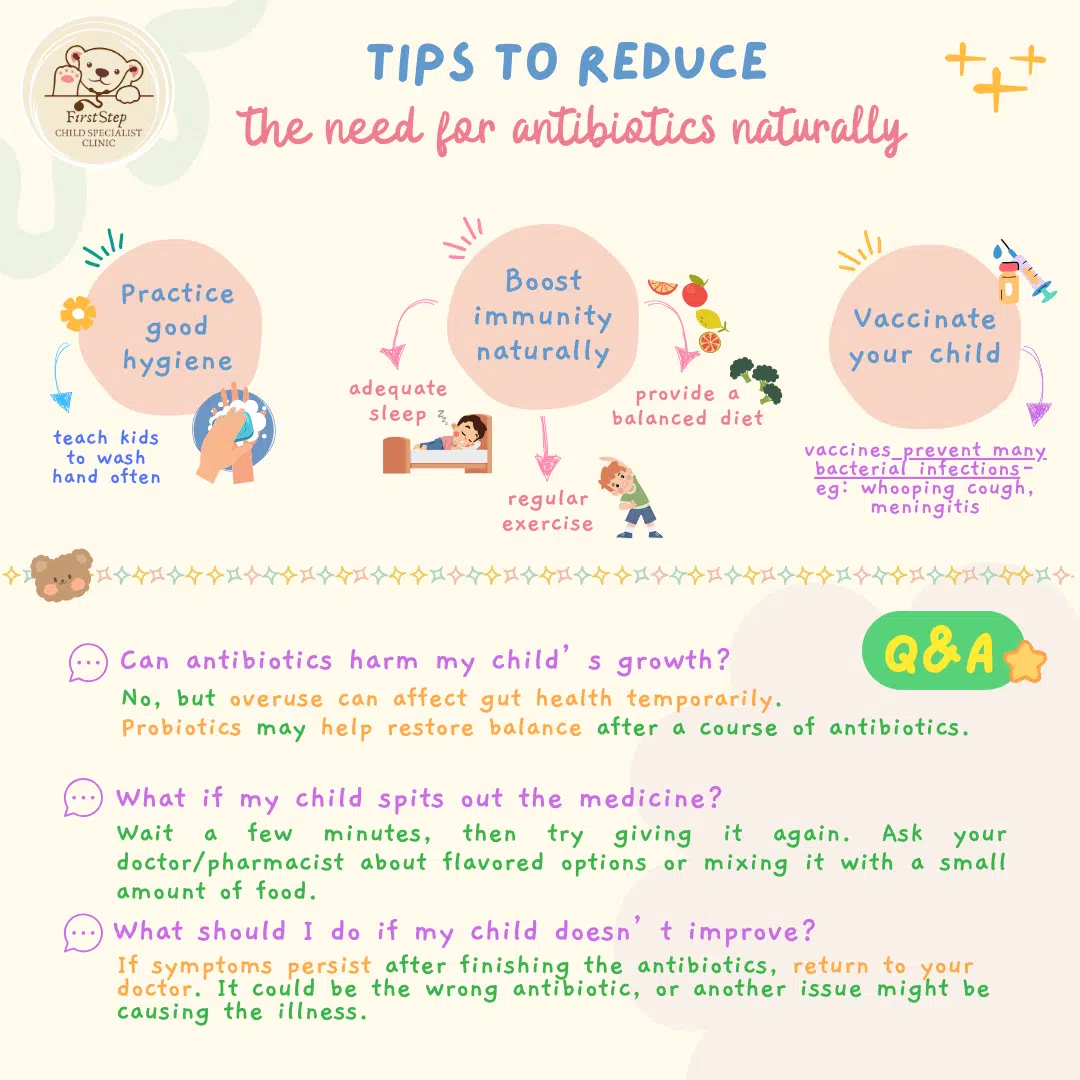
Antibiotics for your child
About antibiotics: What parents should know
Antibiotics are medications used to fight bacterial infections in humans and animals. They either kill the bacteria or inhibit its growth and reproduction. As bacteria are living organisms that cause illness by invading the body, multiplying, and interfering with normal body processes.
However, they are ineffective against viruses, such as those causing colds, the flu, or sore throat.
Antibiotics can be administered in various forms:
- Orally: Taken by mouth as pills, capsules, or liquids.
- Topically: Applied directly to the skin in creams, sprays, or ointments, and may also include eye ointments, eye drops, or ear drops.
- Injectable: Administered through an injection or intravenously (IV), typically for more severe infections.
Why is antibiotic misuse dangerous?
- Antibiotic resistance: overuse or misuse can lead to bacteria that no longer respond to antibiotics, making future infections harder to treat.
- Side effects: No medication is without potential risks or side effects. Taking any drug increases the likelihood of experiencing adverse effects. Antibiotics can cause a range of side effects, which can vary based on the individual and the specific medication. These may include:
- Diarrhea
- Digestive issues
- Constipation
- Changes in heart rhythm
- Organ damage
How do antibiotics work?
How to maximize the effectiveness of antibiotics?
1. Complete the full course of antibiotics
- It is important to finish the entire prescribed course of antibiotics. This is because stopping early can allow bacteria to survive and develop resistance.
- Do not save leftover antibiotics for future use as they may not be effective and could cause harm.
2. Follow dosing instructions carefully
- Make sure you give the correct amount of medication at the right times as prescribed by a doctor.
3. Store antibiotics correctly
- Follow specific storage instructions, such as refrigeration if needed, and keep them out of reach of children.
4. Use antibiotics only when necessary
- Only take antibiotics prescribed by a healthcare professional.
5. Watch for side effects
- Mild diarrhea, nausea, or rash can occur. Please seek immediate medical attention for difficulty breathing, severe rash, and swelling.
1. Mix with Food or Drink (If Approved)
- Why it works: Many antibiotics, especially liquids, have a strong or unpleasant taste. Mixing them with a small amount of a favorite drink (like juice or milk) or soft food (like yogurt or applesauce) can mask the taste.
- How to do it: Only mix a small amount to ensure your child consumes the full dose. Check with the doctor or pharmacist first, as some antibiotics lose effectiveness when mixed with certain foods.
2. Use a Syringe for Accuracy
- Why it works: Syringes are easier to use than spoons for precise measurement, and they make administering medication to younger children or babies more manageable.
- How to do it: Place the syringe toward the inside of your child’s cheek and slowly squirt the medicine to prevent choking or spitting.
3. Create a Positive Experience
- Why it works: Encouraging your child with praise or small rewards can make them more willing to take their medicine.
- How to do it: Use phrases like, “You’re so brave!” or offer a sticker, small treat, or extra playtime as a reward after taking their dose.
4. Be Gentle but Firm
- Why it works: A calm and confident approach reassures your child and reduces resistance.
- How to do it: Avoid showing frustration. Speak calmly and explain why the medicine is important for their health.


